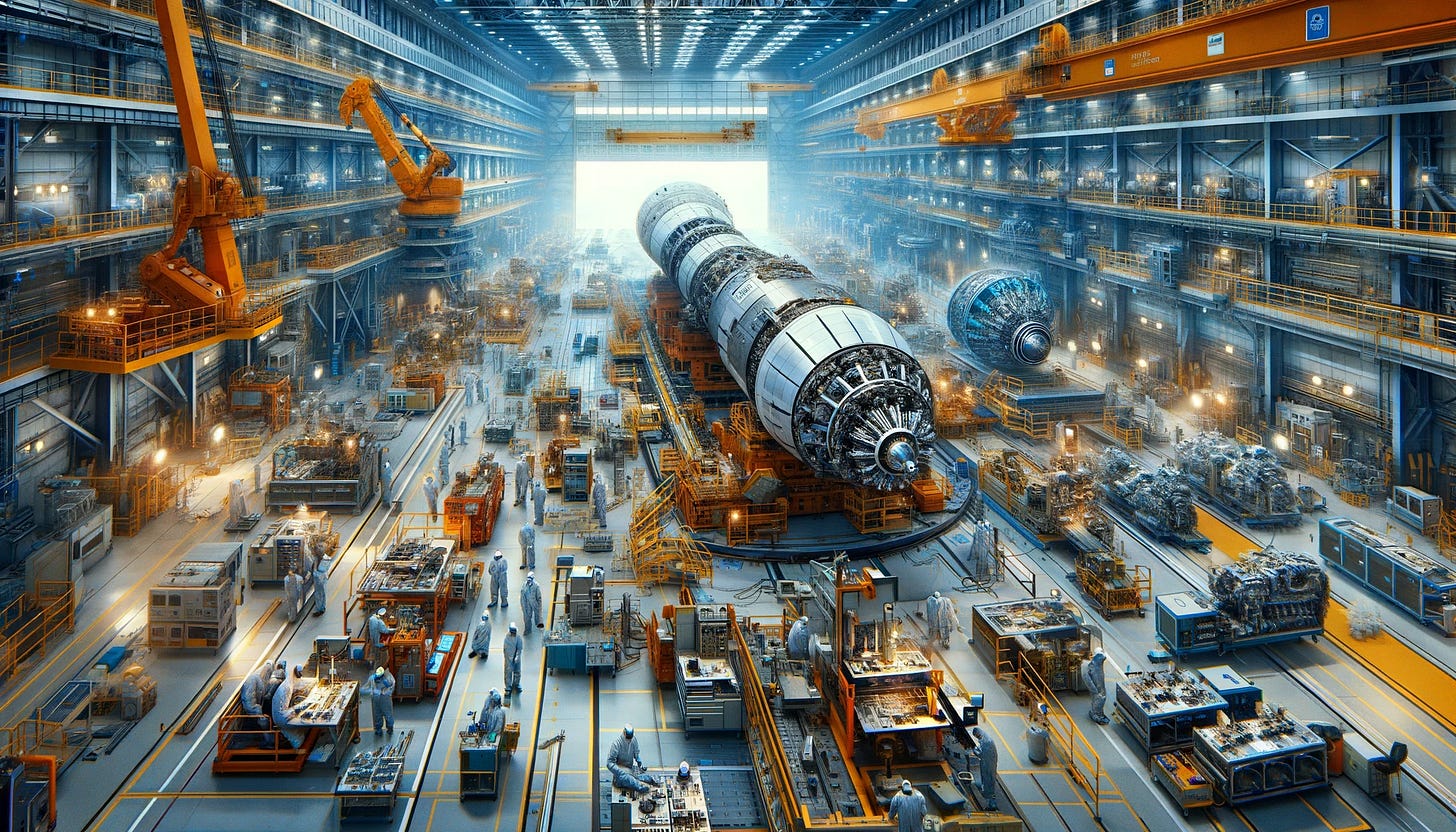How to build an European SpaceX
A tutorial - part one
I spent my years of experience in one of the giants of the European space industry at the time of the founding of SpaceX in the 2000s. Since then, the contrast between the two entities has always fascinated me, and I have tried to understand how we could apply this model in Europe. New Space has been developing here for a few years and suggests that a new European SpaceX is possible; is that really the case? What would it take to achieve this? But ultimately, what are we trying to build when we talk about creating a new SpaceX? These are the answers to these questions that we will try to find through a reflection on several articles, with the hope and the deliberately ambitious goal of motivating those who have the financial and intellectual capacities to realize their space dreams.
Our first article will first try to understand what we mean by creating a European SpaceX, thus outlining the characteristics of this structure that make it emblematic.
SpaceX is known for being the first and most important aerospace startup founded by a billionaire. This description already covers several important aspects: first, the startup concept that gives SpaceX its roots in the Silicon Valley environment with the associated methods and work and business culture: massive investment in extremely ambitious ideas, a brutal outpouring of work and energy to achieve goals in a short time, and the desire to shake up existing structures. Then a small private structure with limited means that starts from zero (not quite, but we will return to this a little later) and manages to send a launcher into orbit and then evolve into a giant of the industry. Finally, a single person at its head who sets up the financing scheme, establishes the vision, defines the strategy, and engages their responsibility. These are roughly the three concepts that intuitively define what SpaceX is.
This vision can also make many people smile
But we need to dig a little deeper into these concepts to really understand the nature of the company and what has allowed it to acquire through its success this status of a model to follow. I don't have an insider view and my analysis is based on publicly available information (articles, biographies, etc.) and on knowledge of the functioning of the aerospace industry. I will do this analysis in the chronological order of the development of SpaceX to highlight their logical articulation and try to follow the reasoning and vision that allowed this development. At the origin is Elon Musk's vision of enabling humans to reach the planet Mars. The objective is ambitious but remains classic in the world of aerospace. Astronauts have been to the Moon, the next closest goal is Mars. There are many influence groups (like the Mars Society) that have been working for decades with NASA and political leaders to push budgets in these directions. So there is already a whole support movement in place when Musk proposes his vision. The fact that he is already a billionaire allows him to be listened to, even courted with great ease. This allows him to create a network of influence in the aerospace industry, a network that can help him in the coming years to convey his messages and his needs in terms of regulations, etc..This vision can also make many people smile: the difficulties and exorbitant costs associated are well known and have so far thwarted all attempts to create a program for landing humans on the red planet. Coming from someone who has no space experience, no launcher development infrastructure available, billionaire or not, his vision was met with disdain, even contempt by many (glancing towards Arianespace but also in the United States). It is here that his professional background in Silicon Valley and the associated cultural context probably helped him to still acquire technical support and highly qualified labor to realize this vision. Indeed, one of the mottos of Silicon Valley is that there are no impossible projects. And multiple startups have generated projects and technical progress that are enviable even in space exploration. There is therefore a strong culture of confidence in progress that permeates Elon Musk's vision. And he knows it, and he has probably largely used this influence and mindset to gain support and also, as we will see later, to hire young talents. This vision is not just a science fiction pamphlet either. There is a real desire behind it to find the means to implement this vision.
There is a real desire behind it to find the means to implement this vision
Technically, he has a real desire to understand all the engineering details: components are not a black box; this seems trivial but is far from the usual case in the aerospace industry where managers consider that each subordinate is responsible for the technical knowledge in their area and the manager handles the management of interfaces. While this system has advantages for managing personnel and separating functions or even subcontracting them, it requires taking huge margins at interfaces and limiting the integration of functions, preventing any search for exotic or truly optimal solutions. On the human side, there is a desire to seek the best skills. I would really like to know how Musk managed to bring in Tom Müller, the director of propulsion with his vast practical and managerial experience, and Gwyneth Shotwell who ensured the impeccable management of the company. These are extremely rare profiles and really difficult to acquire for such high-risk projects. But this attention to recruitment extends to the basic engineer: it is said that Elon Musk personally called the best aerospace students to hire them, using his aura as a successful Silicon Valley entrepreneur. I am surprised that this approach has not been generalized for decades in all companies: why do we always settle for receiving thousands and thousands of CVs, filtering them, and conducting chain interviews of a few minutes to acquire one of the most precious assets of the company, its workforce? In sports, art, music, talents are sought after, negotiated, hard-won. In engineering, it should be the same: students' careers should be followed from the beginning of university, experienced engineers should be constantly observed through their contributions, their publications to follow their development.
He owned up to the failures and pushed to continue
On the organizational level, there's a pragmatic approach: there was no technical solution favored on arbitrary criteria: different solutions were considered, such as buying Russian missiles. The main goal was to find a way to reach Mars as quickly as possible. The development of a launcher is the result of political constraints and the absence of other possible solutions, not just the simple political choice to establish a new space industry. Also, pragmatically, the development of a business plan reflects the origins in Silicon Valley: financial flows were considered from the beginning in Musk's vision scenarios, with the goal of ensuring the financial sustainability of a company with heavy investments to ensure continuous innovation. This practice is also drawn from Silicon Valley, where creating Business Plans has become as natural as breathing. Therefore, cost optimization has directly contributed to technological choices. Finally, on the human level, a significant element is Musk's assumption of responsibility in failures. He owned up to the failures and pushed to continue. Personal responsibility is rare in projects as gigantic as those in astronautics. The validation processes for hardware and flight usually follow a complex circuit of signatures aimed, certainly, at having as many opinions as possible on the authorization, but this significantly dilutes responsibility in case of problems. Humanely, this is beneficial as it avoids having to bear a heavy personal burden in case of problems, but it also leads to a lack of accountability.
So, these are the main characteristics of SpaceX; they are not exhaustive but provide a set of criteria that seems relevant to assess the similarity of a company with SpaceX. From here, in the following articles, we will see if there are already companies in the European New Space that meet these criteria, or at least some of them, and can be considered as potential candidates to become SpaceX. Then we will focus on how to proceed to build a similar company. We will see in fact that it is not about copying SpaceX but about achieving something new, but we are not there yet.



